
Amazon Audible Gift Memberships
Figures from

The painted wooden ceiling of the Palatine Chapel, erected by Ruggero II immediately after his coronation in 1131 and consecrated in 1140, is the only monumental-scale pictorial cycle from the Fatimid period in the Mediterranean basin to have survived in its entirety. The ceiling, made up of star-shaped polygons, is decorated with lively scenes, painted in a clean, clear style with an undeniable Middle Eastern influence, depicting dancing girls, musicians, gamblers, lions and other animals, horsemen and wrestlers, all combined with geometric and vegetal decorations. The polygons are surrounded by inscriptions of good omens in kufic script. The band between the ceiling and the walls is decorated with muqarnas.
Reference: Pier Paolo Racioppi 'Painted wooden ceiling of the Palatine Chapel' in Discover Islamic Art. Place: Museum With No Frontiers
 ISL14998 |
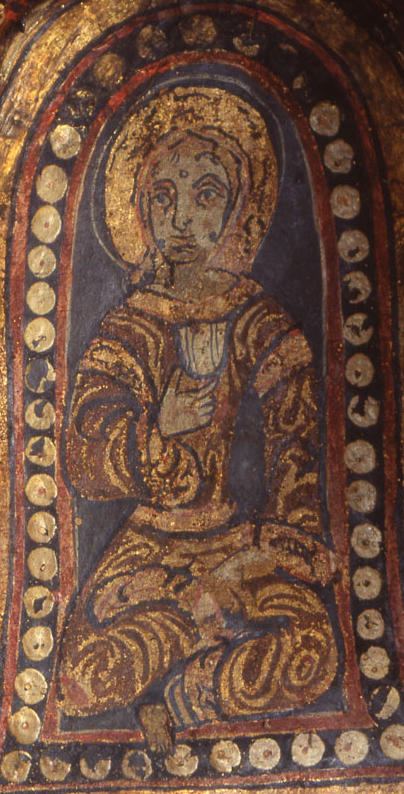 ISL15239 |
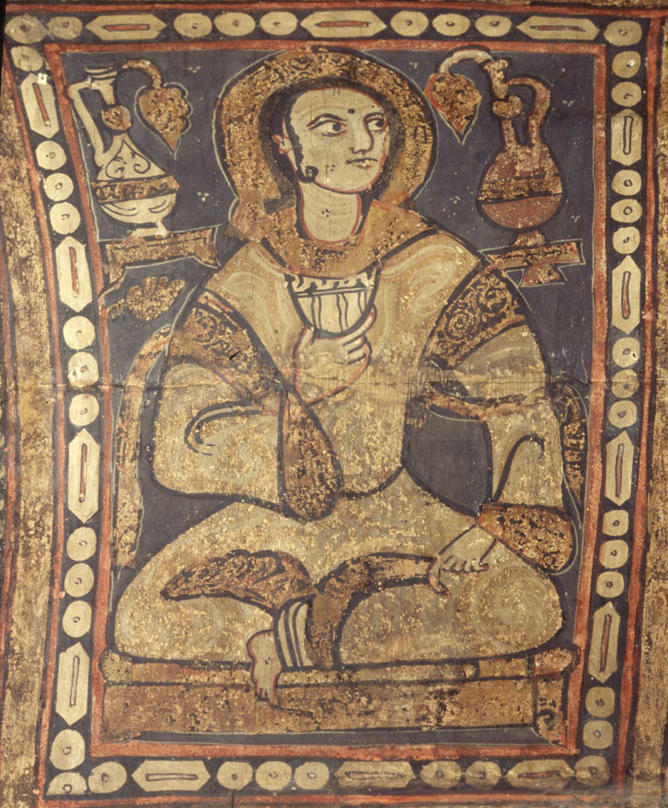 ISL14997 |
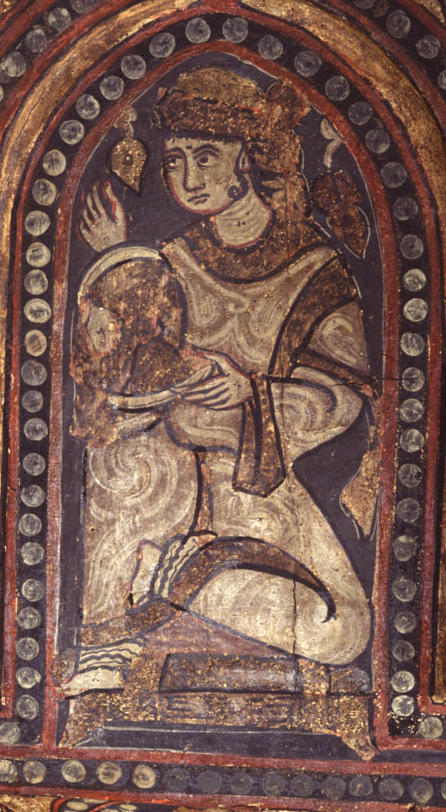 ISL15014 |
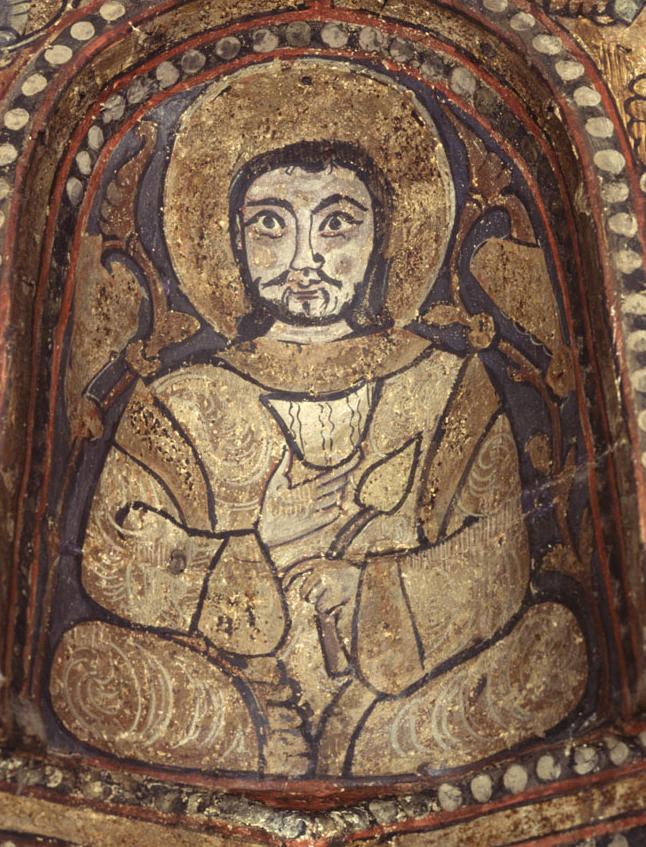 ISL15093 |
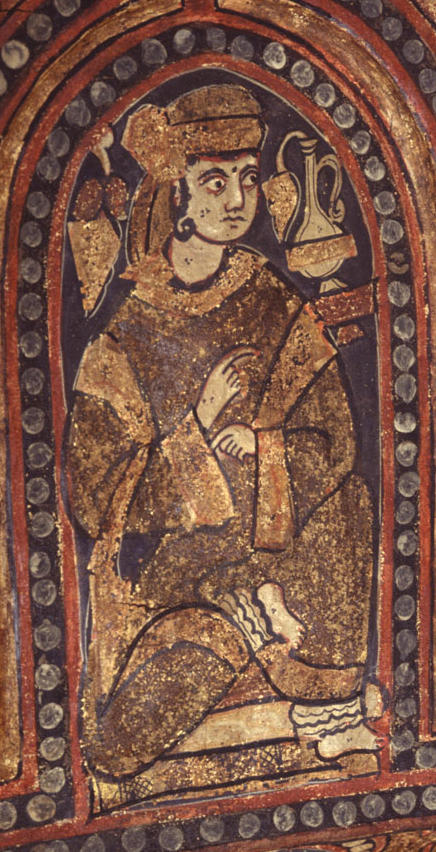 ISL15012 |
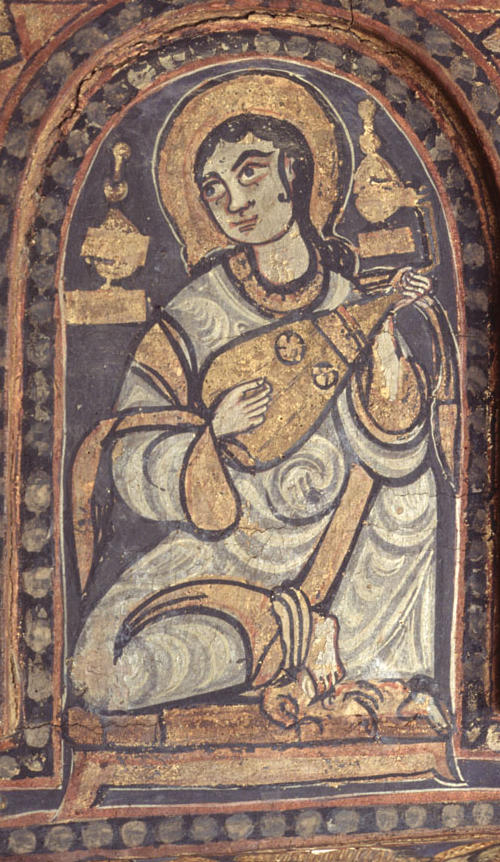 ISL15118 |
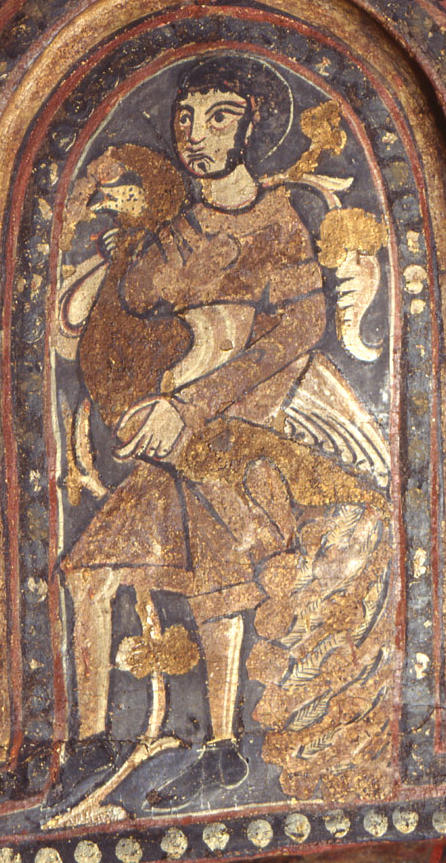 ISL15143 |
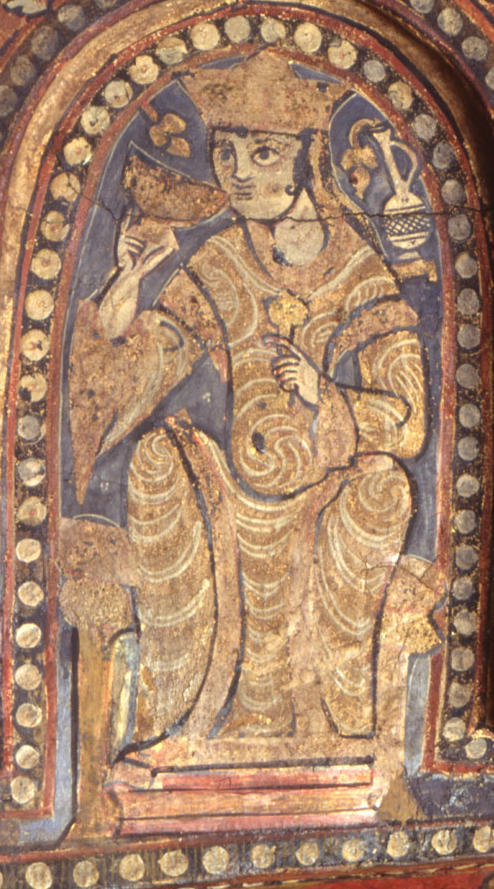 ISL15166 |
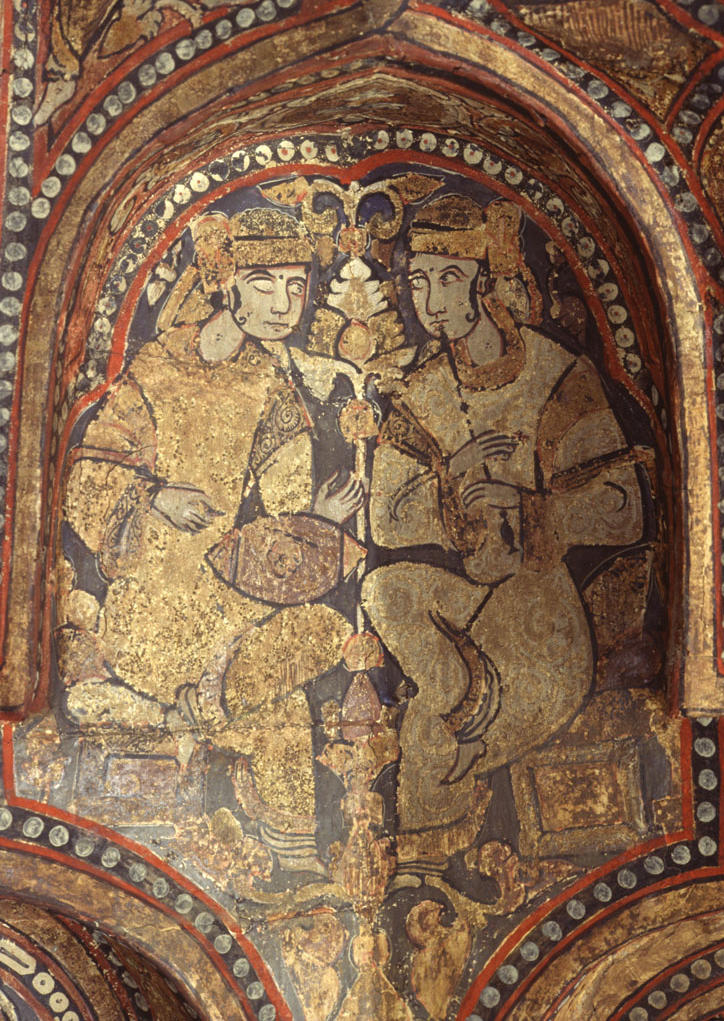 ISL15019 |
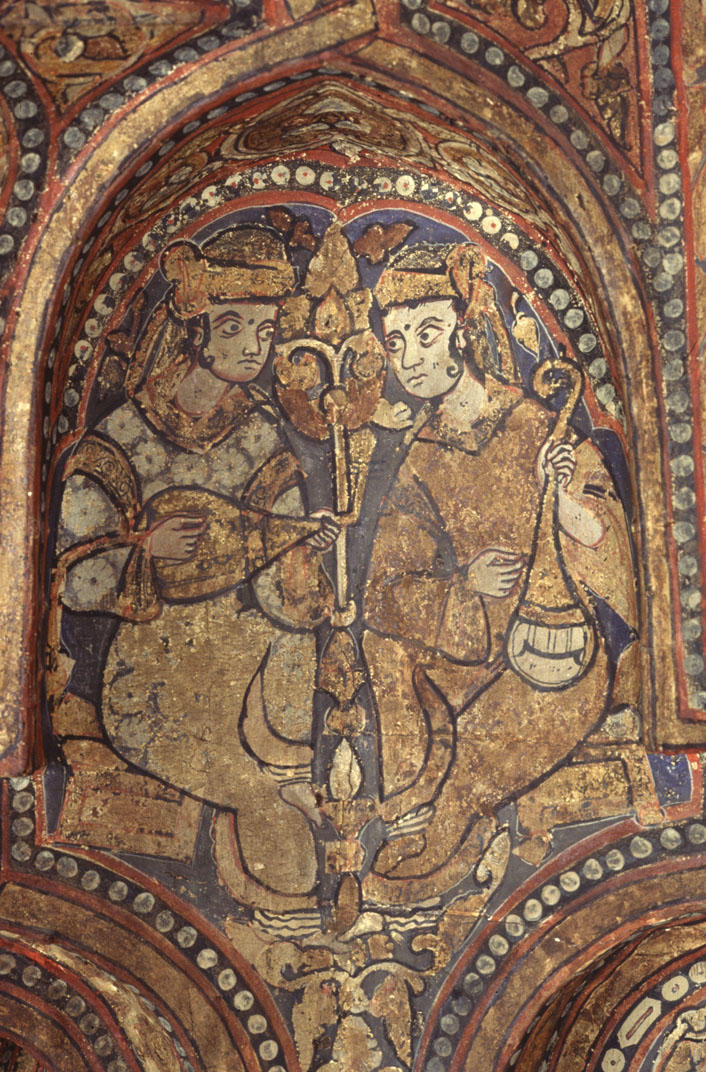 ISL15017 |
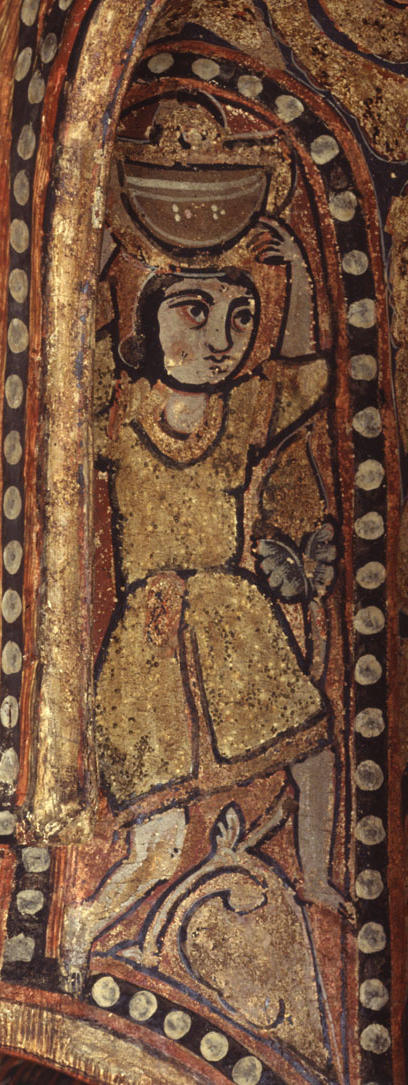 ISL15001 |
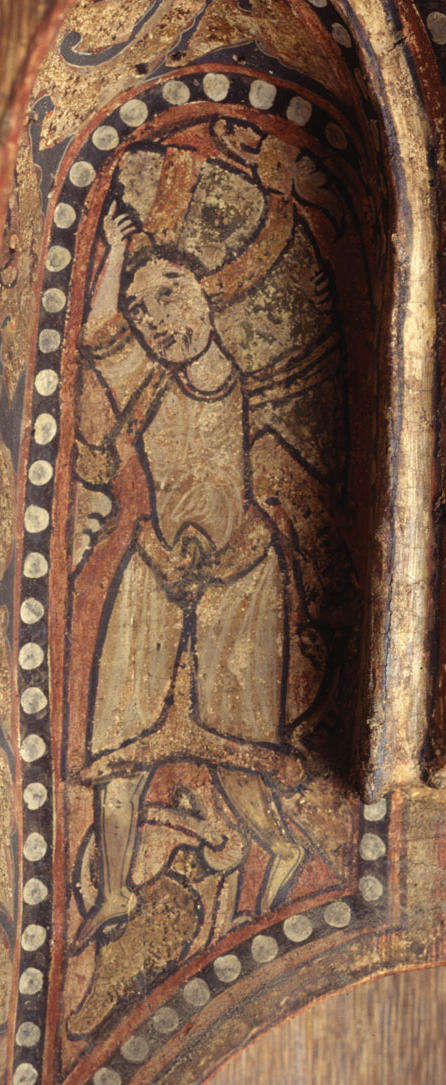 ISL15003 |
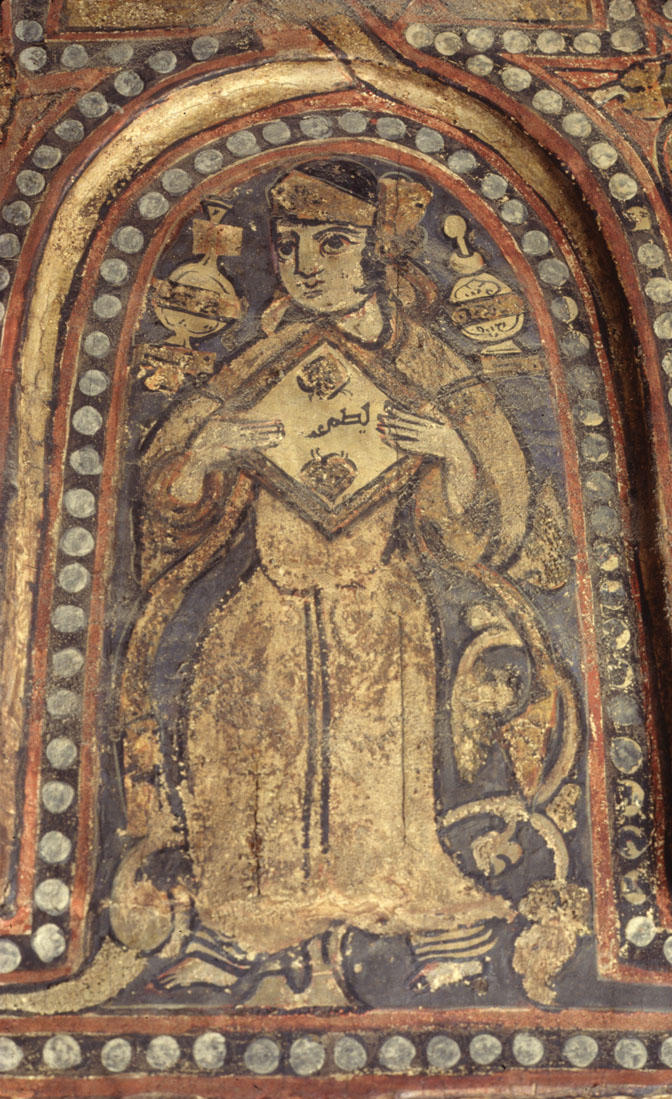 ISL14996 |
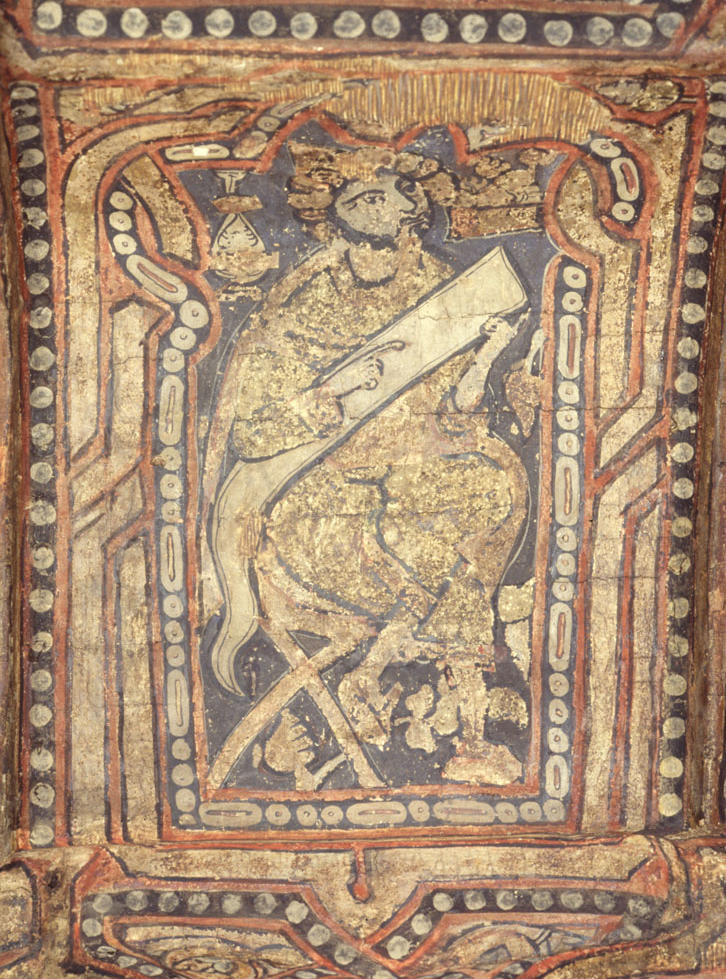 Cappella Palatina: Arabic scribe |
ISL slides. Photographs taken under the supervision of Robert Hillenbrand in 1989, after the restoration of 1949-1953. Khalili Research Centre, University of Oxford (© University of Edinburgh and the Barakat Trust).